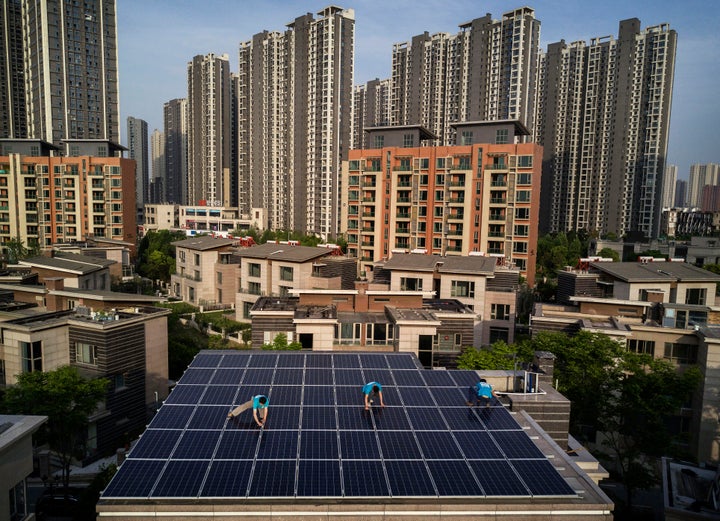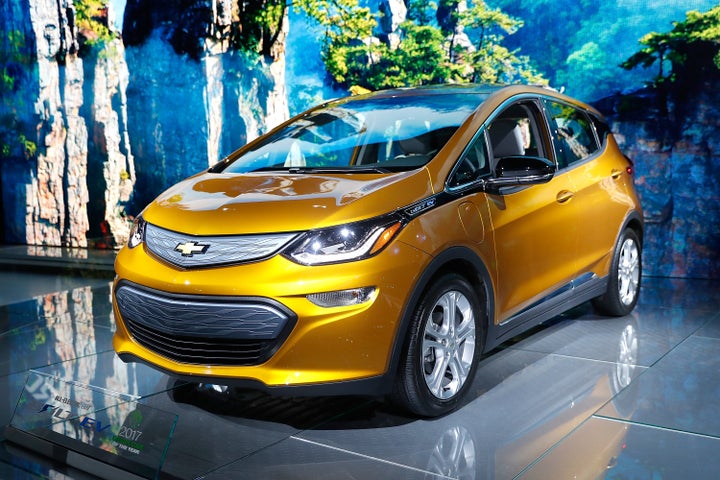
In November 2013, more than 15,000 scientists reissued a warning to humanity of “widespread misery and catastrophic biodiversity loss” unless business-as-usual changed. “By failing to adequately limit population growth, reassess the role of an economy rooted in growth, reduce greenhouse gases, incentivize renewable energy, protect habitat, restore ecosystems, curb pollution, halt defaunation, and constrain invasive alien species, humanity is not taking the urgent steps needed to safeguard our imperilled biosphere,” they wrote.
Former UN climate chief Christiana Figueres and physicist Stefan Rahmstorf last year warned that the world has approximately three years before the worst effects of climate change become inevitable. In an open letter they urged companies, communities, countries and citizens to cut carbon emissions now, arguing that failure means fires, floods, droughts, rising sea levels, extreme weather, agricultural losses and massive insurance costs. Between 2008 and 2016, climate related disasters displaced 21.5 million people.
Humanity is in a horse race with catastrophe. The good news is that we are in the race. But even if we win, it will change our economy beyond recognition.
We have the technologies to solve the worst of the crises facing us, and buy the time to deal with the rest. Back in 2009, Stanford scientist Dr. Mark Jacobson said that renewable energy could power the entire world by 2030. His Solutions Project calculated how to do this for every state in the U.S. and many countries. More recently, scholars like Christian Breyer have shown how to do this with photovoltaics alone.
Stanford Professor Tony Seba argues that not only is the transition to renewables possible, it is inevitable.
In his book Clean Disruption Seba describes how the convergence of disruptive technologies and business models makes a renewable world inevitable. He focuses on four factors: the fall in the cost of solar energy, the fall in the cost of storage (batteries), the rise of the electric vehicle, and the advent of the driverless car.
These innovations, he argues, by delivering renewably powered, electric vehicle transit as a service will be ten times cheaper than current private ownership of internal combustion cars. In the process, the shift to EVs will move us to a completely renewable energy system.
He reminds doubters that experts totally underestimated sales of mobile phones. In the 1990s, McKinsey told ATT to expect 900,000 mobile subscribers by the year 2000. They were off by 108 million. By 2014 there were more mobile phones on earth than the seven billion people, increasing five times faster than humans.
“When the Kentucky Coal Museum puts solar on its roof rather than plug into the coal fired electric grid at its doorstep, you know that the fossil era is over”
A new solar array goes up in the U.S. every 150 seconds, but can the whole world be renewable by 2030?
In August, China announced it had already eclipsed its 2020 goal in solar installations. It now adds 45 gigaWatts of solar every year (more than the entire installed solar capacity of Germany). California predicted it will hit its declared 2030 target of getting 50 percent of its power from renewable energy by 2020. The state is now debating resetting the goal to 100 percent renewable power. More than 100 companies have set such a goal. A thousand cities, too.
Why? Because the cost of solar is falling rapidly. In October Saudi Arabia announced the new world record low price in an auction bid: 1.7¢/kWh. When the Kentucky Coal Museum puts solar on its roof rather than plug into the coal fired electric grid at its doorstep, you know that the fossil era is over.
So we can run our society on solar energy, but what if the sun isn’t shining or the wind blowing?
Storage technology to make renewable energy available 24/7 is only in its infancy as an industry, but its prices are falling, too.
When the Aliso Canyon natural gas well blew out, spewing 100,000 metric tons of methane, a potent greenhouse gas, the local utility feared it would be unable to keep lights on in Southern California. In record time, Tesla and others brought online more than 70 megawatts of energy storage at a price cheaper than building a new gas peaking plant, and vastly faster.
In late 2016 the Financial Times reported that Fitch Ratings warned: “Widespread adoption of battery-powered vehicles is a serious threat to the oil industry,” noting that transport accounted for 55 percent of total oil use in 2014. In the U.S. it accounted for 71 percent of oil use, according to 2016 figures.
It endangers the banks, as well: a quarter of all corporate debt, perhaps as much as $3.4 trillion, is related to utility and car company bonds that are tied to fossil fuel use.
Anyone doubting this risk must have been sobered when, in September 2017, China announced it was going to phase out internal combustion vehicles. Given that China represents a quarter of the global automobile market, this – coupled with India, France, the UK, and Norway making similar announcements – is an existential crisis for both the oil and car industries.
About a week after China’s announcement, Jerry Brown, the Governor of California, the world’s fifth largest economy, asked Mary Nichols, head of the state’s Air Resources Board, whether California could do the same. Two days later she said yes. Two days later Jerry said then we will. That was a Friday.
On the Monday, General Motors, which had reclaimed its coveted status of the world’s leading automobile manufacturer on the strength of its Bolt electric car, announced that its future is electric. Meanwhile, Daimler, Volkswagen and Volvo have committed to electrifying their entire product portfolios.

In November, Elon released an all-electric long haul truck, and China announced the launch of the world’s first all-electric cargo ship.
We’re three for three on Seba’s predictions. But in Seba’s scenario it’s the autonomous electric vehicle (AEV) that drives the real reduction in cost he claims will make the disruption inevitable. Are AEVs more than just science fiction?
To get the straight story, I talked to Tom Chi, the head of Product Experience at Google X and one of the designers of the self-driving Google car.
“Within ten years?” asked Tom. “Easy.” Tesla, he said, released its driverless vehicle when it was as safe as a human driven car. Remember, hundreds of thousands of people die every year in car crashes. Teslas have driven more than 5 billion miles in autonomous mode, en route to the company’s 10 billion mile safety proof point. In fact, all Teslas are now capable of full autonomous mode. The Google car has driven four million real miles, and 2.5 billion simulated miles. GM just announced that it is pivoting its business model to offer autonomous electric vehicle Transit as a Service by 2019.
Does that make it four for four? Is Tony right?
You decide. But realize that if the evidence laid out here is true, it has profound implications for everything. It will mean the dissolution in value, likely complete loss of the oil, gas, coal, uranium, nuclear, utility, auto industries, the banks that hold the loan paper for all of these companies and the pension funds and insurance companies that are invested in them.
It will mean an economic collapse on a scale never seen coming at us within about 10 years.
Consider oil. In 2011, Carbon Tracker calculated that at least 80 percent of the fossil deposits still in the ground would have to stay in the ground if the world is to avoid warming beyond 2C more that pre-industrial levels.
Given that those fossil assets are on the balance sheets of some of the world’s wealthiest companies and form the basis of the sovereign wealth funds of many nations around the world, John Fullerton of the Capital Institute predicted that this implied a write-off of at least $20 trillion dollars. In contrast, Fullerton warned, the 2008 financial collapse was triggered by the stranding of only $2.7 trillion in mortgage assets.
What can be done?
It appears unwise to have any of your assets in the industries that will be disrupted. Bevis Longstreth, former Securities and Exchange Commissioner, observed: “It is entirely plausible, even predictable, that continuing to hold equities in fossil fuel companies will be ruled negligence.”
Where does your energy come from? Are you dependent on an industry that is at risk? Millions of people, communities and cities are going 100 percent renewable.
Is your job at risk? Companies will either become part of the solution, or they won’t be a problem because they won’t be around. The emerging industries are creating millions of jobs, but millions are at risk. Will we substitute a Universal Basic Income? Will we descend into unimaginable darkness? Or will we create a Finer Future?
Either way, we will totally transform the global economy. The crises we face and the inevitabilities of change described here will drive this change.
For more content and to be part of HuffPost’s new economy community join our Facebook Group.
